Remembering Pro Football Hall of Famer, Super Bowl MVP, Alliance legend Len Dawson
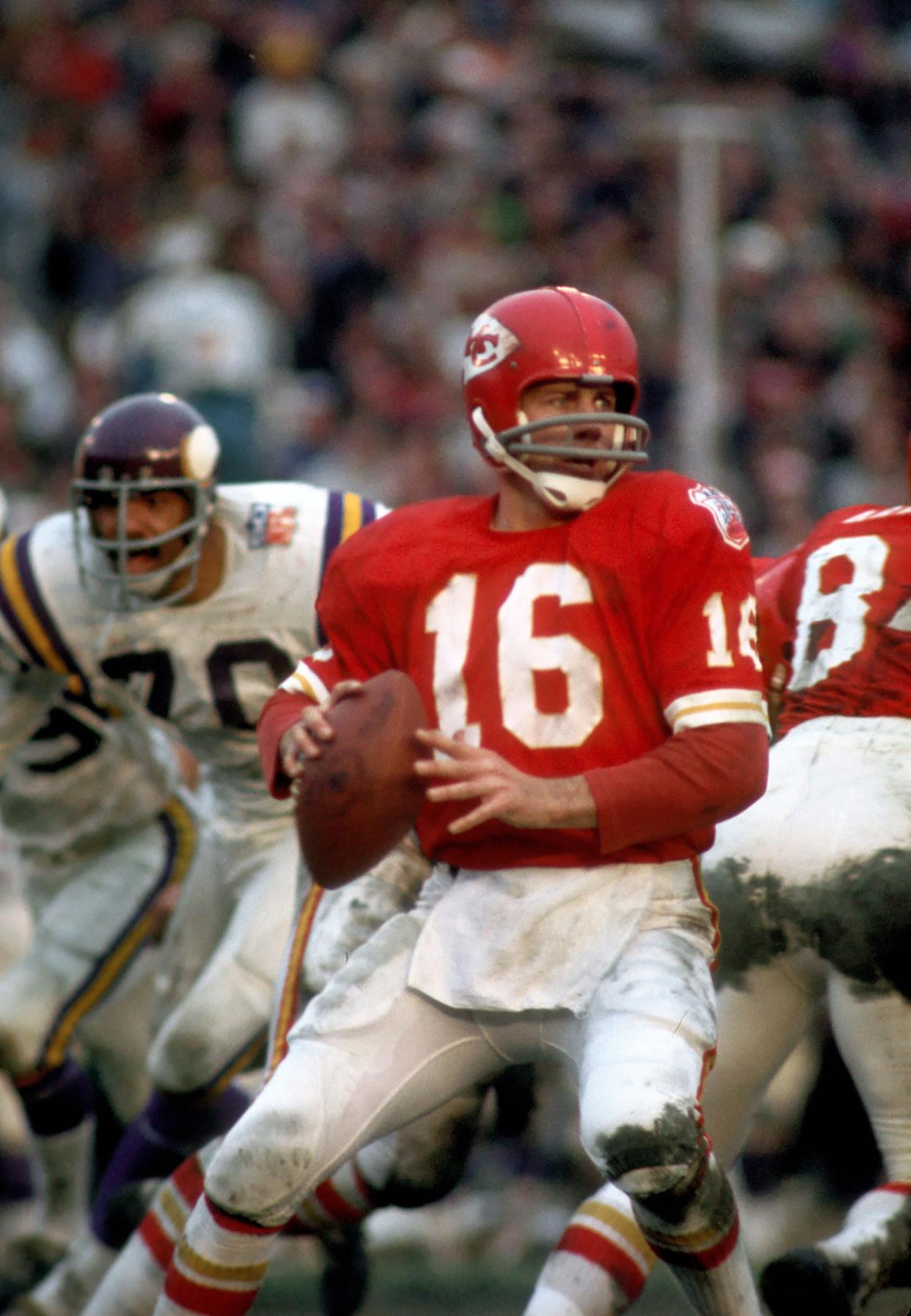
- Oops!Something went wrong.Please try again later.
- Oops!Something went wrong.Please try again later.
- Oops!Something went wrong.Please try again later.
- Oops!Something went wrong.Please try again later.
Len Dawson has died, leaving a legacy with a deep impact on Alliance, Stark County and the football world.
Dawson was an Alliance High School quarterback in the 1950s who lived most of his adult life in Kansas City, where he died at age 87 on Wednesday.
Dawson's family announced his death in a statement to KMBC, the Kansas City-based television station where he had a second career as a broadcaster. No cause was given, though Dawson had been in declining health for years.
"With wife Linda at his side, it is with much sadness that we inform you of the passing of our beloved Len Dawson," the family's statement read. "He was a wonderful husband, father, brother and friend. Len was always grateful and many times overwhelmed by the countless bonds he made during his football and broadcast careers."
A strong case can be made that Paul Brown, Marion Motley and Dawson are the most important football figures in Stark County football history.
Brown played at Massillon in the 1920s, coached the Tigers into a high school empire from 1932-40, and was hired straight into the top job at Ohio State, where he piloted the Buckeyes to the 1942 national championship. He then coached the Cleveland Browns to league championship games every year from 1946 to 1955.
Motley was a fearsome McKinley fullback and linebacker whose only losses in his last two seasons were to Brown's Massillon Tigers. In 1946, a year before Jackie Robinson broke the color barrier in baseball, Motley was one of four Black men who did that in pro football. Motley is regarded as one of the three best players in Browns history, with Otto Graham and Jim Brown.
Dawson arguably was the best high school quarterback Stark County has seen. After a college career at Purdue and an unfruitful NFL run as a Browns backup, he went to Kansas City, quarterbacked the Chiefs to Super Bowl I, and was the MVP in Super Bowl IV.
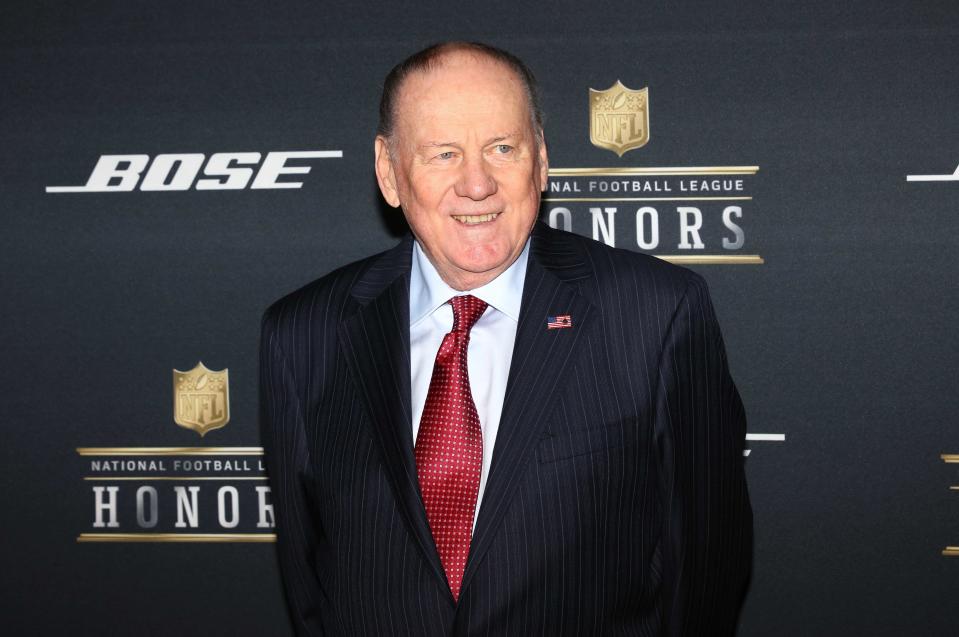
The Pro Football Hall of Fame enshrined Brown in 1967, Motley in 1968 and Dawson in 1987.
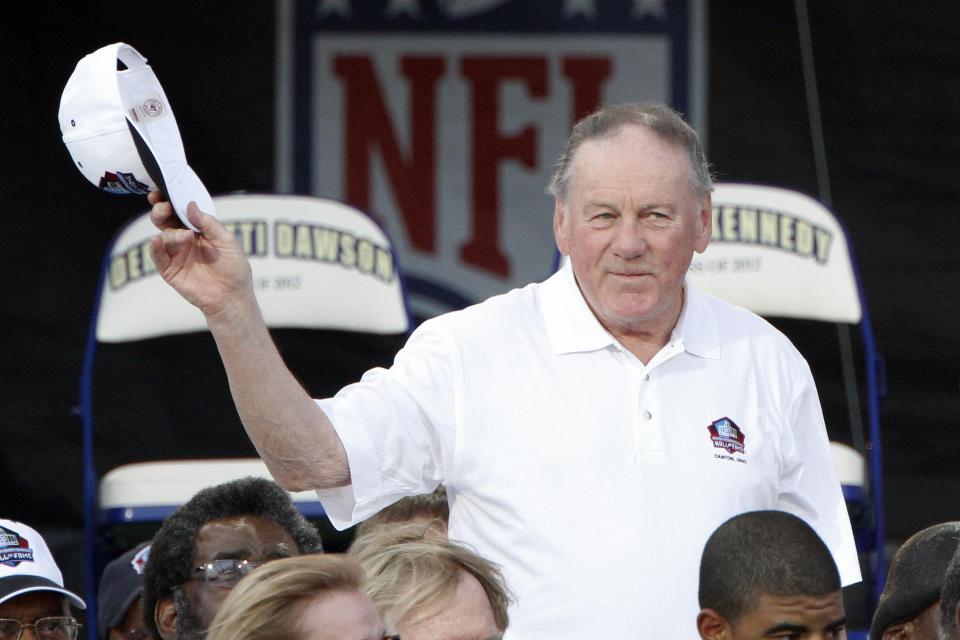
In 2012, Dawson was in Alliance to accept a "Hometown Hall of Famer" Award. Steve Perry, the Pro Football Hall of Fame's executive director at the time, touched on the Dawson legacy: "Passing wasn’t a primary way to move the ball down the field, but Lenny made it THE way to move the ball here at Alliance, a style that made him an all-time elite forward passer in the NFL.
"That’s why there’s a practice field here at Alliance in his honor, which makes it further fitting that this plaque will be placed here in the lobby by the ticket booth."
Dawson addressed the gathering by saying, "Look at me. I never started and finished a game in the first five years of my NFL career. So the advice I have to young students and athletes is to never give up and do the best you can with the opportunities you are presented with. This honor ranks the highest of any I’ve received. To me there’s nothing better."
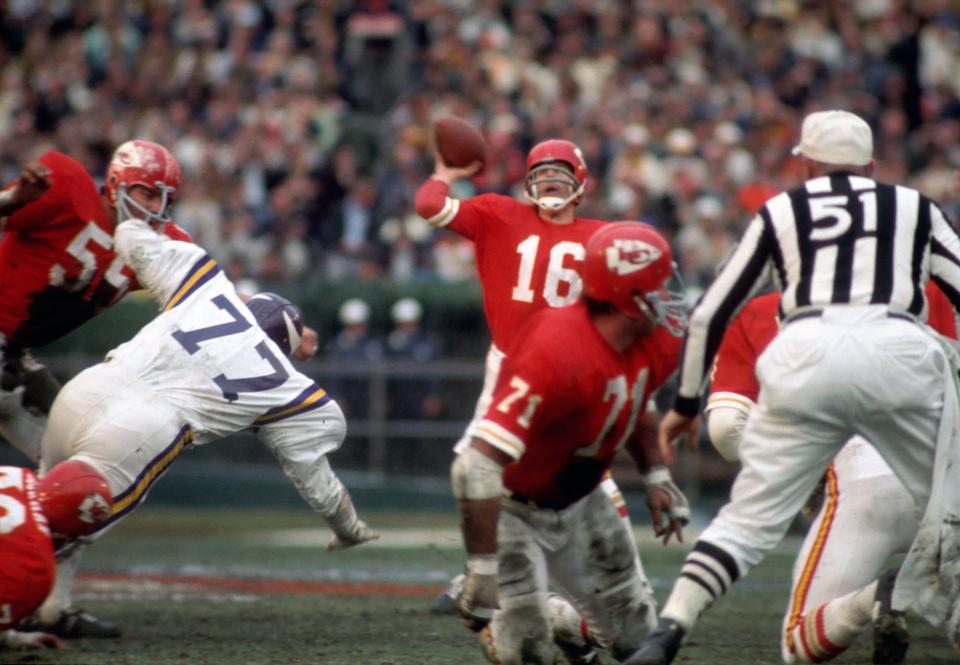
Len Dawson starred at Alliance High School before becoming a Hall of Famer
Dawson came from a large family, and noted at his Hall of Fame enshrinement he was "the seventh son of a seven son," in lore thought to be a circumstance of great fortune.
He already had a big name at Alliance before his senior year, but that went to the next level when he made All-Ohio in football in 1952 and All-Ohio in basketball in 1953.
Dawson played when Massillon was one of Alliance's regular football rivals. The Tigers of the 1950s, coached by Chuck Mather, were as strong as Brown's teams had been.
Dawson was a senior in 1952, when Massillon won a national poll championship. The Tigers dominated every opponent except Alliance.
After Massillon outlasted Alliance 27-21 on Oct. 10, 1952, Luther Emery of the Massillon Evening Independent wrote of Dawson in the prose of that era:
"It was a thriller-diller of a contest with Alliance playing inspired ball, completing passes all over the gridiron to control the leather. It wasn’t difficult to pick out the Alliance star. Not only did Dawson pass up a storm, but he also punted, kicked, threw for two touchdowns, and scored the third himself. Without him Alliance would not have too much armor."
Len Dawson chooses Purdue over Ohio State
Woody Hayes, who was in his second year as head coach at Ohio State when Dawson was an Alliance senior, recruited Dawson, but Dawson concluded his passing abilities would get lost in Hayes' run-first offense.
Dawson didn't play at Purdue as a freshman but, in his second start as a sophomore, led the Boilermakers to a 27-14 upset of No. 1 Notre Dame. That was the only year he faced Ohio State, losing 26-8.
The Boilermakers were an average team for the most part in Dawson's three years as a starter, going 5-3-1, 5-3-1 and 3-4-2, but he was highly regarded by the NFL. The first six picks of the 1957 draft were Paul Hornung (Packers), Jon Arnett (Rams), John Brodie (49ers), Ron Kramer (Packers), Dawson (Steelers) and Jim Brown (Browns).
Dawson spent three years on the Steelers' bench.
"I was the understudy to Bobby Layne," Dawson said in a 2009 interview with Kansas City's KMBC-TV, where he was a longtime sports anchor. "If you want to learn the fundamentals of quarterbacking, the last guy you would go to was Bobby Layne. I developed some terrible habits."
He went to Cleveland in a 1960 trade and wasted away there under Paul Brown, whose No. 1 quarterback was Milt Plum.
"Paul Brown had wanted me when I was in college," Dawson told KMBC. "My job in Cleveland was to back up Milt Plum. Paul Brown wasn't really looking for a quarterback, because he was featuring the running game, so I could see that I wasn't going to get an opportunity."
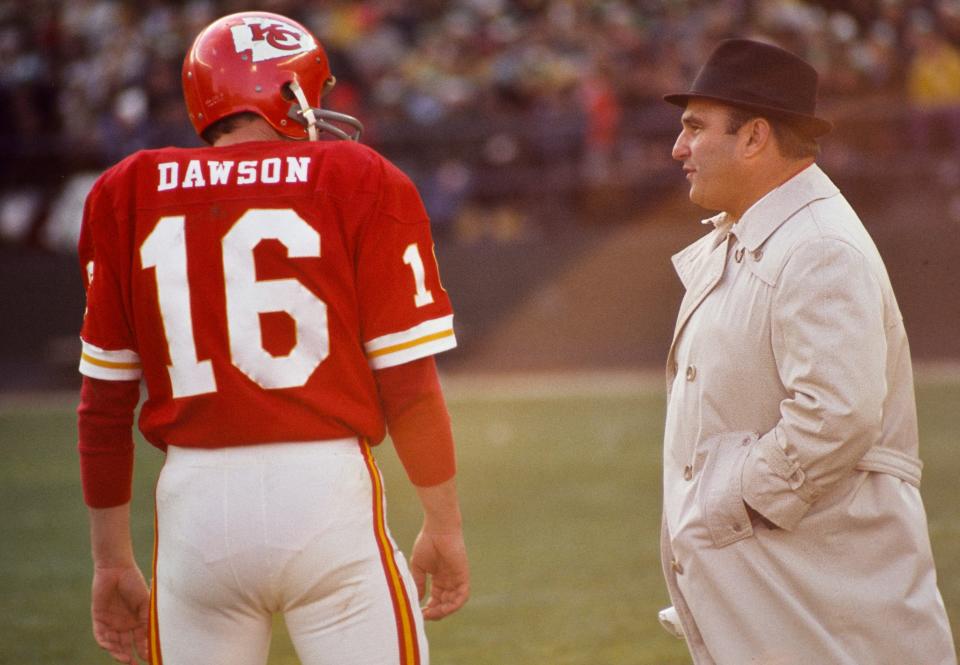
Len Dawson finds success with Hank Stram in American Football League
Dawson jumped to the American Football League in 1962, when the Dallas Texans were a third-year team coached by Hank Stram. Stram was a Purdue assistant throughout Dawson's college career.
"Hank was in (Cleveland) and we had breakfast one morning," Dawson said. "He could see that I wasn’t very happy, not getting a chance to play. He said, 'Well, if you ever get free, give me a call. We’d love to have you with the Texans.'
"Wanting to jump on that chance, I figured I had nothing to lose by asking Paul Brown for my release."
Decades later, Stram shared a secret: "Paul Brown called me and said, 'As a fellow coach, I want you to know that I don't think Lenny can play in the National Football League.' I said, 'OK. I'm still going to take him.'"
Dawson started for Stram's Texans right away and led them to an 11-3 regular season and a win over the Houston Oilers in the 1962 AFL Championship Game.
The Texans moved to Kansas City and became the Chiefs in 1963 and had three ordinary seasons before going 11-2-1 in 1966. That was the year the NFL agreed to pit its champion against the AFL champion in a game that wasn't called the Super Bowl, but now is known as Super Bowl I.
The Chiefs were routed 35-10 by Vince Lombardi's Green Bay Packers.
Paul Brown launched the Cincinnati Bengals as an expansion team in 1968, when Dawson led the Chiefs to a 12-2 record that included two wins over the Brown's new team. In the postseason, the AFC champion New York Jets made history by beating the NFL champion Baltimore Colts in Super Bowl III.
Len Dawson becomes MVP of Super Bowl IV
The last year for the AFL before merging with the NFL was 1969, when Dawson and the Chiefs beat the Minnesota Vikings 23-7 in Super Bowl IV. Dawson was selected the game's MVP after completing 12 of 17 passes for 142 yards and a touchdown.
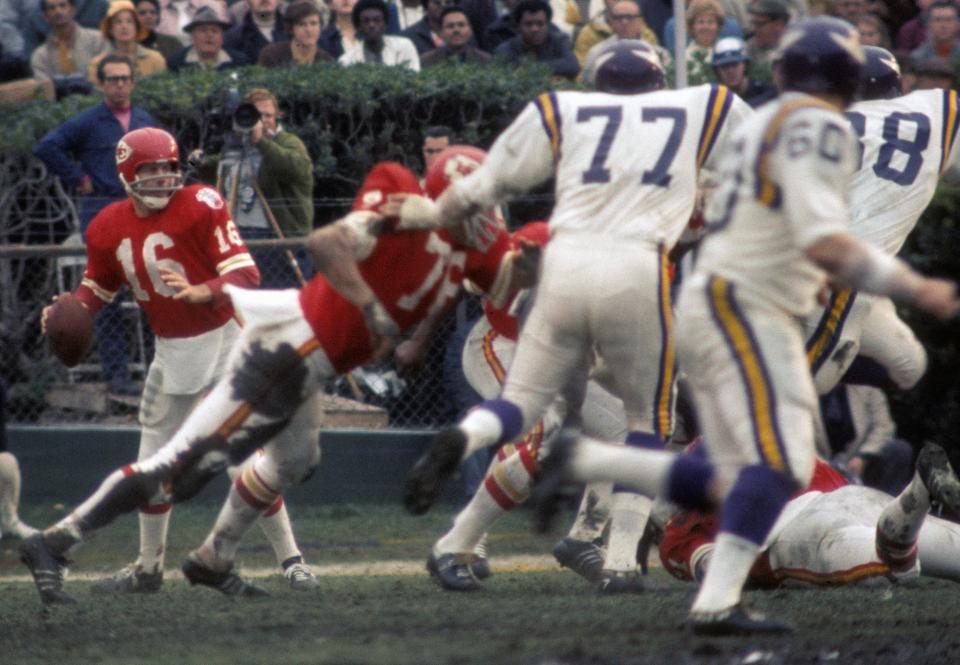
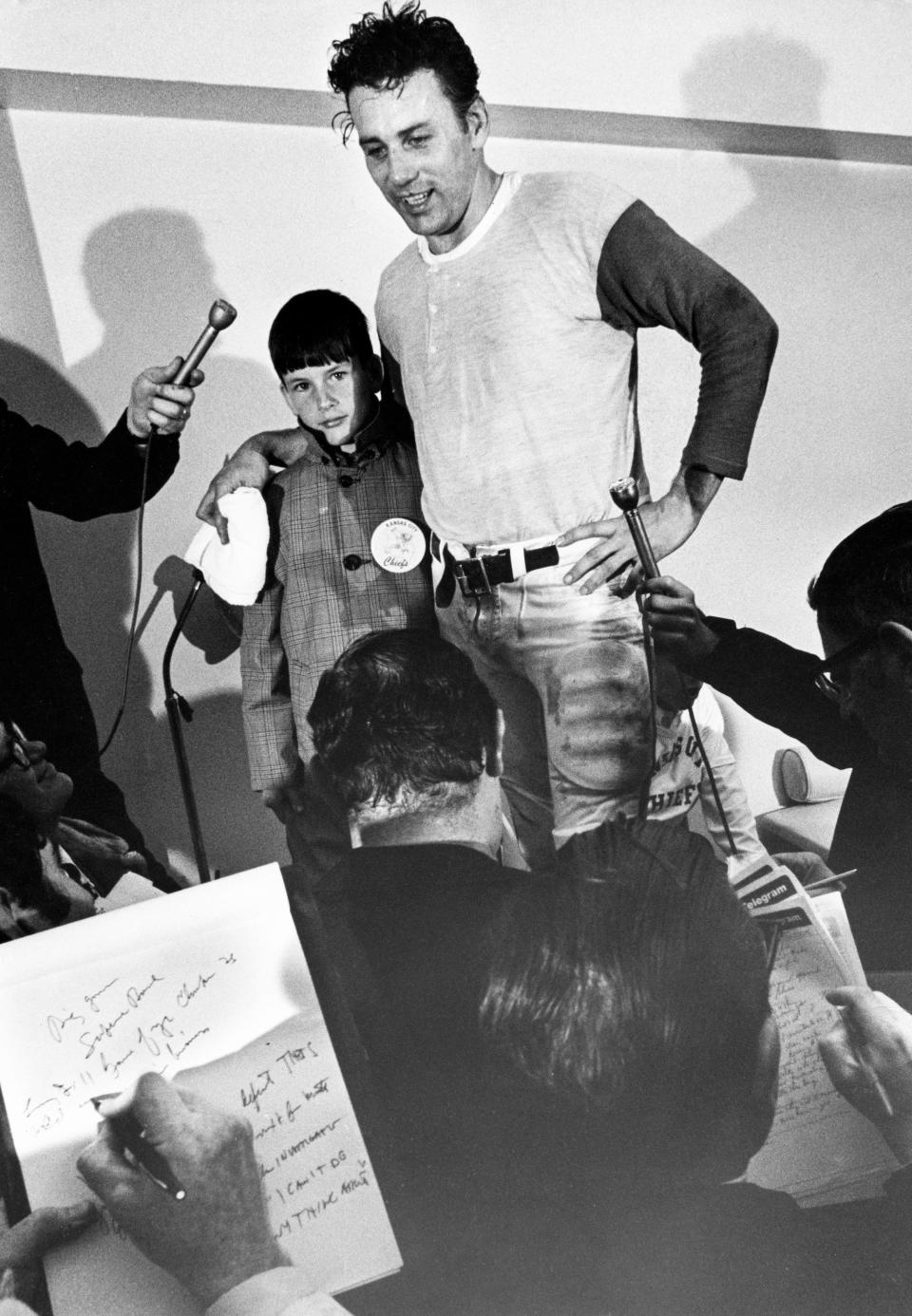
Joe Namath, the quarterback of the Jets' Super Bowl winner, went into the Hall of Fame two years before Dawson. A case can be made that Dawson was a better quarterback. Dawson's AFL-NFL record as a starter was 99-60-8, including 5-3 in the postseason. Namath was 63-65-4 (2-1 postseason).
Dawson became Kansas City's favorite son, spending a long career as a radio and television voice of the Chiefs.
Len Dawson began his athletic journey on Alliance's Goat Hill
The road began in Alliance.
In a 2016 interview with Cliff Hickman of the Canton Repository, Dawson spoke of a field at Morgan Avenue and Garwood Street. It was known as Goat Hill.
“I was 10 or 11 years old and I’d always go up to Goat Hill,” Dawson said. “There were a lot of kids in the area and that’s where they all hung out. It was never hard to find a game of some kind going on there. There were always nine guys around to play baseball.
“I had a paper route and I remember on Sundays that I would be three to four blocks into it and see kids playing baseball up at Goat Hill. I would drop the papers and go join in. One of the neighbors would see me up there playing and they would call my home and my sister would have to come and pick up the papers and finish the route for me.
“I had six older brothers. One was very good at basketball. He was in charge of the basketball leagues over at the Methodist church. I would go down and he would teach me the fundamentals. I ended up being very advanced at basketball for a 10-year-old. It was the same with baseball. I had another brother that took me out and showed me how to run the bases and everything. I was way ahead of a lot of other kids, and I was fortunate to have had those experiences.”
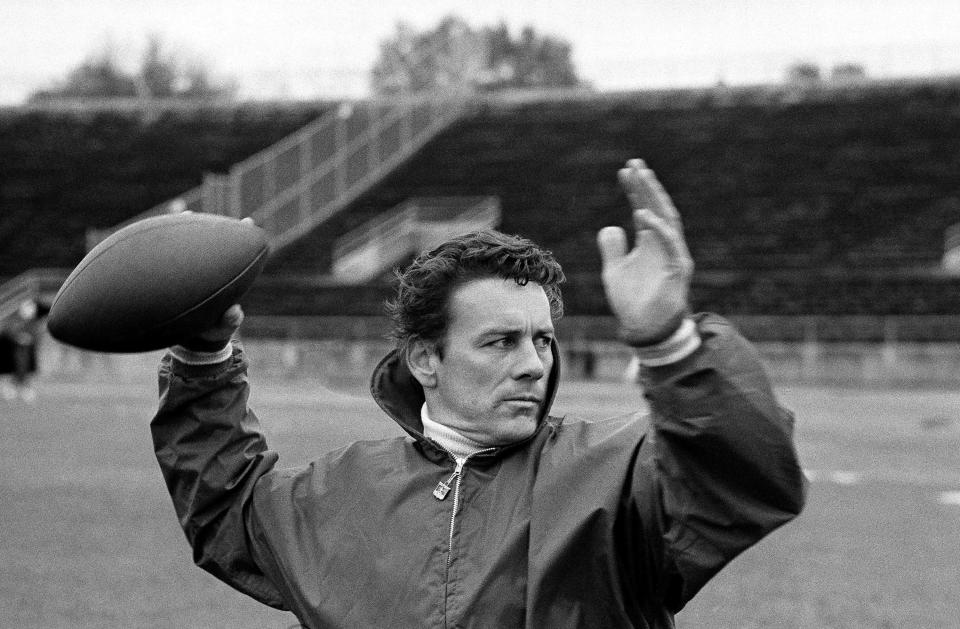
This article originally appeared on The Repository: Pro Football Hall of Fame quarterback Len Dawson dies at 87

